Voter:
The Politics of Place and the Disuniting of America Jacobs
Visit to download the full and correct content document: https://ebookmass.com/product/the-rural-voter-the-politics-of-place-and-the-disuniting -of-america-jacobs/
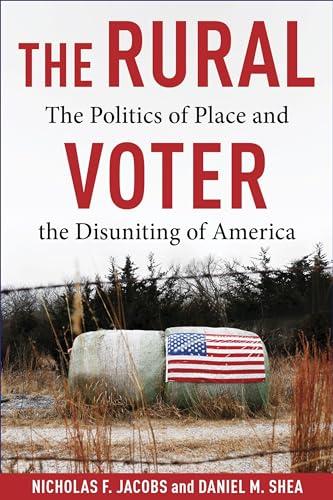
More products digital (pdf, epub, mobi) instant download maybe you interests ...

The Politics of Place Naming: Naming the World Frederic Giraut
https://ebookmass.com/product/the-politics-of-place-namingnaming-the-world-frederic-giraut/
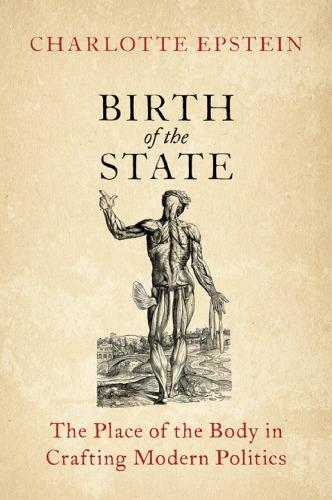
Birth Of The State: The Place Of The Body In Crafting Modern Politics 1st Edition Edition Charlotte Epstein
https://ebookmass.com/product/birth-of-the-state-the-place-ofthe-body-in-crafting-modern-politics-1st-edition-editioncharlotte-epstein/
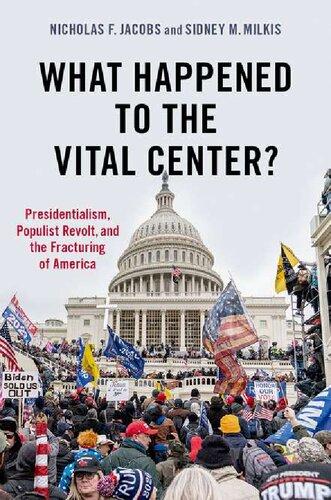
What Happened to the Vital Center? Presidentialism, Populist Revolt, and the Fracturing of America Nicholas Jacobs
https://ebookmass.com/product/what-happened-to-the-vital-centerpresidentialism-populist-revolt-and-the-fracturing-of-americanicholas-jacobs/
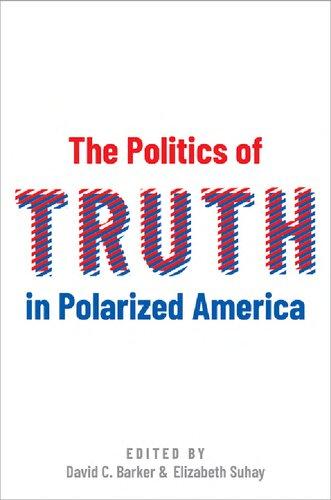
The Politics of Truth in Polarized America David C. Barker
https://ebookmass.com/product/the-politics-of-truth-in-polarizedamerica-david-c-barker/
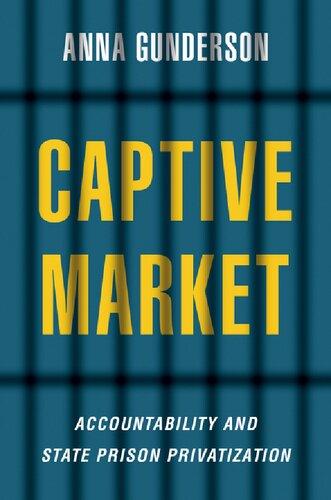
Captive Market: The Politics of Private Prisons in America Anna Gunderson
https://ebookmass.com/product/captive-market-the-politics-ofprivate-prisons-in-america-anna-gunderson/
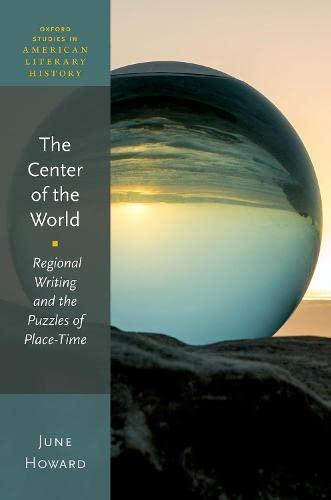
The Center of the World: Regional Writing and the Puzzles of Place-Time June Howard
https://ebookmass.com/product/the-center-of-the-world-regionalwriting-and-the-puzzles-of-place-time-june-howard/
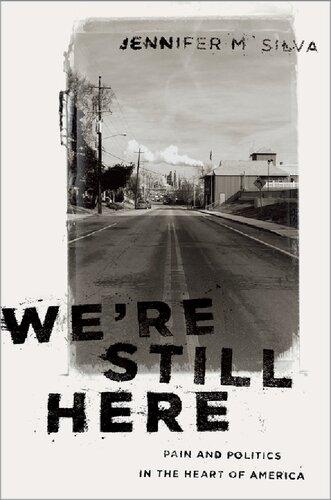
We're Still Here: Pain and Politics in the Heart of America Jennifer M. Silva
https://ebookmass.com/product/were-still-here-pain-and-politicsin-the-heart-of-america-jennifer-m-silva/

Energy Politics and Rural Development in Sub-Saharan Africa: The Case of Ghana 1st Edition Naaborle Sackeyfio (Auth.)
https://ebookmass.com/product/energy-politics-and-ruraldevelopment-in-sub-saharan-africa-the-case-of-ghana-1st-editionnaaborle-sackeyfio-auth/

The Rural-Migration Nexus: Global Problems, Rural Issues Nathan Kerrigan
https://ebookmass.com/product/the-rural-migration-nexus-globalproblems-rural-issues-nathan-kerrigan/
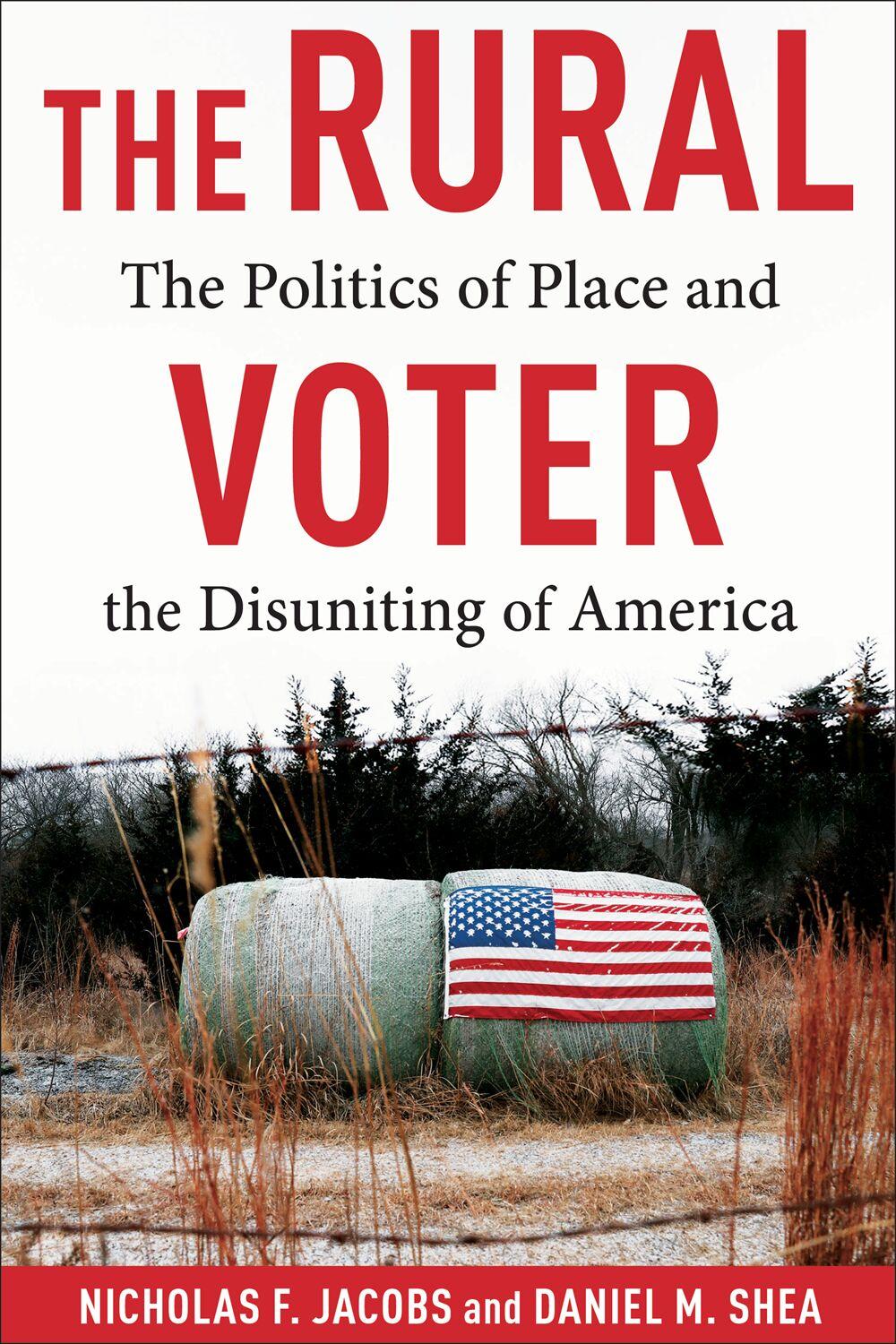
THE RURAL VOTER
THE RURAL VOTER
THE POLITICS OF PLACE AND THE DISUNITING OF AMERICA
NICHOLAS F. JACOBS AND DANIEL M. SHEA
Columbia University Press New York
Columbia University Press
Publishers Since 1893
New York Chichester, West Sussex cup.columbia.edu
Copyright © 2024 Columbia University Press
All rights reserved
Library of Congress Cataloging-in-Publication Data
Names: Jacobs, Nicholas F., author. | Shea, Daniel M. author. Title: The rural voter : the politics of place and the disuniting of America / Nicholas F. Jacobs and Daniel M. Shea.
Description: New York : Columbia University Press, 2023. | Includes bibliographical references and index. Identifiers: LCCN 2023020608 | ISBN 9780231211581 (hardback) | ISBN 9780231558983 (ebook)
Subjects: LCSH: Conservatism—United States. | Right and left (Political science)—United States | Rural-urban relations—Political aspects—United States. | Rural population—United States—Attitudes. | Republican Party (U.S. : 1854–) | Political culture—United States. Classification: LCC JC573.2.U6 J34 2023 | DDC 320.5209173/4—dc23/eng/20230606 LC record available at https://lccn.loc.gov/2023020608
Printed in the United States of America
Cover design: Noah Arlow
Cover image: AP
The house had gone to bring again To the midnight sky a sunset glow. Now the chimney was all of the house that stood, Like a pistil after the petals go.
The barn opposed across the way, That would have joined the house in flame Had it been the will of the wind, was left To bear forsaken the place’s name.
No more it opened with all one end For teams that came by the stony road To drum on the floor with scurrying hoofs And brush the mow with the summer load.
The birds that came to it through the air At broken windows flew out and in, Their murmur more like the sigh we sigh From too much dwelling on what has been.
Yet for them the lilac renewed its leaf, And the aged elm, though touched with fire; And the dry pump flung up an awkward arm; And the fence post carried a strand of wire.
For them there was really nothing sad. But though they rejoiced in the nest they kept, One had to be versed in country things Not to believe the phoebes wept.
—Robert Frost, “The Need of Being Versed in Country Things”
8 IRREDEEMABLY RACIST? 287
9 RADICALIZED BY FOX? 324
10 PULLING IT ALL TOGETHER: FINDING THE RURAL VOTER 359
11 BRIDGES ACROSS THE RURAL-URBAN DIVIDE 380 Notes 415 Index 453
PREFACE
The idea for this book probably emerged after some pleasantly distracting conversation about maple sap, cider-making, chickens, or the long list of things we needed to do to get ready for winter. Since we met at Colby College in the autumn of 2019, we have spent too much time wasting away the productive hours of our days talking about our little slice of heaven here in rural Maine.
We are a tad unusual for academics in that regard. Our colleagues like to joke that we have “gone native,” but both of us have fond connections to rural areas and rural people, even as we have followed our academic careers to different parts of the country than where we grew up. At the end of the day, we wrote a book on rural America because there is much we love and admire about rural life. There is something truly special about rural communities. Sure, living out in the country takes its toll, and our urbane colleagues and students often scratch their heads with wonder as to why we would ever put up with frozen septic tanks, hauling cord wood, the lack of good take-out, all the driving, and, more than anything else, all those Trump voters.
To a point, we have asked ourselves the same things. Why would we live such different lives, and alongside people who seem to have such a different view about what type of leader this country needs? We have lived the rural-urban divide—a divide that took on an even more tragic
dimension with the spread of COVID-19. We saw farmers struggle when they were unable to get migrant workers because the border had shut down; we talked with so-called nonessential laborers who had never missed a day of work in their lives; we struggled to make sense of why our neighbors dismissed the severity of the disease as it ripped through places like New York City and then refused to get vaccinated just as the pandemic was wreaking its worst havoc on rural communities. Inevitably, the conversation would pivot to something Trump did, or the idiocy of something Biden said. And yet, where others would end the conversation there, seeing it as nothing more than a cult of personality, naked partisanship, or stubborn irrationality, we suspected something else was going on. We have no desire to make excuses for our neighbors, but in the early days of trying to piece all this together, we quickly realized that the image we had been given of the “rural voter” was not the one standing before us.
No doubt the disconnect had much to do with the pictures of rural America we carried in our heads from growing up alongside rural people. Nick remembers the old dairy farmers at church talking about the days when cows would break free and run down Main Street; but as the suburbs rapidly crept over western Virginia, his mother was having to drive him to the ever-moving hinterlands to pick up hay for their rabbits and find eggs to incubate. Rural Virginia seemed like a lost idea when the last working farm in town was paved over the year after he left for college in Fredericksburg, Virginia, which was booming at the other end of the state’s steady march toward suburbanization. Fortunately, Nick feels it will be a long time before someone even thinks about plopping a subdivision in Vassalboro, Maine. Any developer should be scared off by the sounds of his rooster, which starts the day for many of his neighbors on the Priest Hill Road.
Dan was raised in rural upstate New York; his roots were planted deeply in the rocky soil of the northern Catskills. Daily life was in a small town, but escapes to old farms and woodlots to fish and hunt with brothers, cousins, and uncles were recurrent. His dad taught him the grandeur of a twelve-inch native brook trout and his mom, the magic of loons at dusk. A connection to an extended rural family was cemented
most weekends when all would gather on “Bowers Hill,” just up the road from Roscoe, for big Sunday dinners, tall tales, and family gossip. Over the years, he’s moved between a few rural college towns and now spends his leisure time with his wife and kids gardening, tapping maple trees, and fly-fishing in the great woods of northern Maine.
In its rapid disappearance and our constant search to remain connected to the land and its people, we both value what Robert Frost described as the “country things.” Of course, the simple interpretation is that there are just things one learns about living in rural parts: felling trees, picking off garden-meddling groundhogs—you know, the fun stuff. But we know that it is much more than that—a mindful disposition about what matters, a careful reflection about nature and its awesome power over us, a commanding sense of stewardship for the land and the people who call it home. Frost wrote the poem three years after the U.S. Census announced that for the first time, a majority of Americans lived in urban areas. Would they, he wondered, learn the same lessons living a city life? Would they develop the sense of humility and love of place that keeps us grounded and oriented to larger purposes?
And then, we wonder, could one ever imagine finding such sentiments in a campaign speech by Donald Trump, a man who made his career paving over the country things we hold dear and commercializing on his urbane pride? Humble, frugal, and outward-looking—if that is what rural means to us, why did so many of our rural neighbors see this guy as their salvation? Worse still, that is surely not the image we got from all the news reports and flyover commentary in the aftermath of 2016. Rural people were mad, loud, primed for a rebellion. Maybe they no longer valued the country things. J. D. Vance told us of their homes being ripped apart by drug addiction and job loss, communities in disarray. Others pointed to all those whites in the countryside who hated immigrants and wanted to keep them out of the country. Maybe Thomas Frank was prophetic when he told us about how the yokels had been hoodwinked in Kansas when Republicans stormed into power by stoking fears of abortion, same-sex marriage, and women working outside the home!
At every step of this long journey, we have been more than ready to confront the grim reality that the rural America of our past and our
mythology has disappeared and that, in its place, we have come to live alongside people chronically depressed, irredeemably racist, and culturally backward.
But that is not what we discovered in writing this book. The country things are still to be found in rural America. But you need to know where to look.
In writing this book, we have benefited in untold ways from the hundreds of conversations we have had with our students, colleagues, and friends. Nick would not be thinking much about rural politics if not for the warm friendship he developed with the displaced rural Montanan Kal Munis at the University of Virginia. Their early musings on place and rural identity were fervently criticized and ultimately encouraged by several scholars, especially: Kathy Cramer, Lynn Sanders, Justin Kirkland, Nick Winter, and Sid Milkis.
Not far from Dan’s mind at every step of this process was an admonition from his mother, Rosemary Bowers Shea, stretching back twenty years or so. Not long after he had completed his doctorate and written a few books, they were riding in the backroads of Delaware County on a fair spring day. As they bent around a curve, yet another dilapidated farmhouse came into view, rife with burn barrels, rusty lawn furniture, junked cars, and outbuildings pitched to the side. Dan muddled, half under his breath, “What slobs. . . . Can’t they clean up that mess?” In a beat, Rosemary’s head shot around. “Who the hell do you think you are? Those are your people, Danny. That’s where you come from and don’t you forget it.” They rode home in silence, and he never did.
But the seeds of those early lessons and mentors could blossom into the much larger work presented here only with strong support from our Colby College community. The President’s Office and the Provost of the college provided tremendous financial support, and the Rural Voter Survey would simply not have been possible without David Greene and Margaret McFadden’s commitment to research at our small liberal arts college. Our Diamond Hall colleagues have endured hundreds of small
distractions as we crossed the hallway between our two offices on a near daily basis these last two years. We are thankful for not only their patience but also their support as they have shown a genuine curiosity about our work: Tizoc Chavez, Nazlı Konya, Sandy Maisel, Lindsay Mayka, Carrie LeVan, Joe Reisert, Ken Rodman, and Jen Yoder.
The Goldfarb Center for Public Affairs at Colby College offered us financial support and, under the leadership of former director Kimberly Flowers, enabled us to speak and engage with rural voters across the country.
The research would not have been possible without the tireless support of our student researchers. From the start, Claudia Miner, now pursuing a Ph.D. of her own, crunched data and helped lead other research assistants. A small team of ambitious Colby undergraduates joined us as we sketched out the first few questions of the Rural Voter Survey: Ellie Batchelder, Emily Glass, Olivia Greif, Emma MacCallum, Will Short, and Maddie Wehr. As you will soon read, we pulled together one of the largest historic election/census data sets ever created, and that massive undertaking would not have happened but for the hard work of Brooklyn Clark, Nicole Huebner, and Azalea Yunus. An array of research support came from Ben Dixon, Linh Dinh, George Fitzgerald, Eleanor Goldman, Joe Grassi, Amir Jiru, Margo Kenyon, Natasha Rimalovski, Caroline Scarola, Dov Shore, Maddie Silano, and Lily Yustein. Mandie Lisco and Sabrina Jiang had the “pleasure” of coding openended questions from more than ten thousand respondents, for which we are eternally grateful.
And, of course, we have been unable to talk about much else but rural politics these last few years, and we owe a debt of gratitude to our friends—fellow scholars and neighbors—who contributed to our thinking: Richard Burke, Emile Lester, Anthony Sparacino, and our many neighbors in Vassalboro and Mt. Vernon.
We are deeply indebted to Kal Munis, as well as Zoe Nemerever and Sam Hayes, for reading the manuscript in its entirety and offering honest and insightful comments on each chapter. Three anonymous reviewers commissioned by Columbia University Press also gave keen and careful and attention to our work.
It has been a pleasure to work with Stephen Wesley and the entire team at Columbia University Press. Stephen has been an enthusiastic supporter of this project from the time we pitched it, and he is a committed partner in our effort to make rigorous scholarship accessible to a wider public audience.
If our friends and colleagues think we constantly talk to each other about rural politics, they have no idea what our wives go through on a daily basis. Rachel Jacobs and Christine Gatto-Shea are not only deeply supportive and patient partners, they are keen observers of rural politics in their own right. Not a single good idea you read in this book has not been subject to some eyebrow raising across the dinner table on their part.
And finally, there are our children—the most important reason we call rural Maine home and seek to better understand it. Sometimes academic work can feel a bit detached from the concerns of everyday people. We sincerely hope this book can play some small part in preserving what we love and value in rural life so our children can pass it along (even if they leave us and move to the big city).
Nick would like to dedicate this to his kids—the future caretakers of the Jacobs homestead: Benjamin and Anderson.
Dan would like to dedicate his efforts to his mother, Rosemary, who remained a proud fern picker’s kid all her life.
THE RURAL VOTER
Americas
Sometimes it feels as if we live and work in two different countries. The drive into Waterville, Maine, home of Colby College, is just twenty-five minutes for each of us. On the road, we pass familiar sights: kids at bus stops, hay fields, maple groves, duck blinds, a tractor here or there, junk cars. In Waterville, there is, as our students remark, a glimmer of “civilization”—stores, restaurants, new EV charging stations, construction everywhere, especially in the “revitalization” of downtown.
In the small village of Vassalboro, you know summer has arrived when American flags can be seen hanging from every telephone pole in town. Near Mount Vernon, the farm stands are open and the first cut of hay lies drying in the sun. One of us lives right down the road from a defunct wool mill, so old that it had made uniforms for Union soldiers and where, every Saturday, a handful of farmers meet on the green out front to sell fresh veggies and talk of winter on the horizon. The other lives in the Belgrade Lakes region—the land of pointed firs and granite shorelines—an ancient summer retreat for Bostonians looking to escape the heat for two weeks of serenity out on the pond.
And then there are the Trump flags. Hung next to Old Glory on porches, draped over tents at the farmers markets, fixed to the backs of pickup trucks, sometimes alongside Confederate flags, even though we’re six hundred miles from Gettysburg. And the bumper stickers:
“Make Liberals Cry Again.” “Trump: No More Bullshit.” “Keep America Great.” Bright red MAGA hats sit on dashboards. Up the road, one farmer put up a new cattle barn, but before the siding went on in November 2020, he emblazoned TRUMP 2020 on the paneling. Homemade billboards are spread out across front lawns and seem to hold up the sides of old sheds: “Do n’t Blame me, I voted for Trump.” “Let’s Go Brandon!” And then, as you cross the bridge into town, they all disappear.
Driving through rural America, you would think there is nothing more important in our lives than Donald Trump. You may guess that we are obsessed, and plenty of images could confirm your suspicion that rural America is pissed off. You may have read that rural America is anxious about immigrants. You may have listened to economists tell you that rural America is falling behind and doesn’t know how—or want— to catch up. You may be sitting there thinking, “Of course they voted for Trump and watch Fox News incessantly. What else are they to do? It’s so boring out there.”
But when we talk to our neighbors, it is hard to believe that someone like Donald Trump could be so popular. Sure, when looking at vote returns it’s very clear: Trump ruled over rural America in 2016 and 2020. But why is that true? An ethically challenged businessman who seems to caricature the glitz and glamor of jet-setting Manhattan luxury—how on earth did he become the voice of rural America? Sure, there are racists, homophobes, sexists—the deplorables—out here in the countryside, but they are everywhere in America. Can that really explain why rural America is so supportive of Trump and Republican candidates down the ballot?
We do not ask these questions just because we are rural residents. As social scientists, we also find these images ironic because both of our rural communities, by any objective measure, are doing better than the grizzly old town of Waterville. Median incomes are higher, the schools are better rated, home vacancy is practically nonexistent, drug crimes are lower. And while Waterville has a Republican presence, Donald Trump’s luster loses its sheen once you enter town. In this urban hamlet, he netted just 35 percent of the vote in 2020.
The intensity of Republican partisanship and the ubiquity of Trump support in rural America has become a basic fact in contemporary American politics—a common talking point among pundits since the 2016 presidential election. In the days after Trump’s shocking victory, analysts learned the correct pronunciation of sparsely populated counties in western Michigan and central Pennsylvania. Producers scrambled to get the inside perspective from recovering country dwellers who could speak to the bigotry, desperation, and collapse of communities primed for Trump’s harsh rhetoric and nativist appeals. Collectively, we have learned much about how the other half—actually, the other fifth— lives, and the rural-urban divide is now one of the most important ways for making sense of the country’s intense partisan acrimony. We have seen countless stories of Appalachia in disarray. Pills, closed mines and factories, and crumbling infrastructure left communities primed for the anger and populist message of someone like Trump. Media portray rural voters as desperate. Left-leaning writers talk about how Republicans can distract simpletons in rural Kansas with tales of the abortion doctor gone rampant and teachers peddling critical race theory. Racist, backward-looking, uneducated, and poor—in retrospect, they say, it seems obvious how Trump could take hold in these places.
From our perspective, the picture painted by these memoirs and journalism is, at best, simplistic and more often just plain wrong. It is undeniably true that rural America supports Trump, as true as it is that Republican candidates have courted rural voters and brought them into the party fold over the last forty years. Whether they are Republican, Democrat, journalist, or campaign strategist, everyone seems to look to the hinterland and say, “There’s the real America. Of course Republicans are going to do well there. It’s simple.”
But while rural life may be, at times, simple, its politics is anything but. We are told that rural America’s support for Trump exists simply because voters there are whiter, older, and less likely to have a college degree. One perspective is that there is nothing special per se about ruralness. The rural-urban divide is just another part of America’s racial, ethnic, and generational divide.1 And yet, white rural Americans behave differently than whites living in urban and suburban places; they do not
share the same universe of opinions, even if they voted for the same Republican. Even nonwhite residents of rural places seem to have a different relationship with government than racial and ethnic minorities living elsewhere. On closer examination, ruralness is not, in fact, reducible to whiteness. Geography matters.
Likewise, rural America is undeniably poor, and the economic livelihood of many rural communities has withered with globalization, free trade, and the move to an information-centered economy. But rural America is not all poor. There is a middle class, and there are even deep pockets of wealth. One story that’s often told is that the downtrodden and economically dislocated are enraged, ready to embrace Trump and other firebrand Republicans.2 But even if rural America is poorer, and therefore more likely to vote for populist candidates, its citizens are not that much poorer than those in other parts of America, which are also suffering economically. Income inequality plagues all of America, and over the last forty years, it has increased the most in urban areas, not the countryside.3 If you had to choose, would you rather be poor in Hannibal, Missouri, or on the streets of San Francisco? Why are only some of the poor drawn to Trump? And why are those doing just fine in rural areas voting for him, too?
Maybe it’s the quality of public services in rural communities? Sure, some schools in rural America are closing, but shiny new regional education campuses are springing up in many communities. Has government turned its back to rural Americans? Rural America is older and sicker, but it also receives a disproportionate share of government funding to shore up its health care system. Nearly one in four nonelderly rural residents is on Medicaid.4 Even if politicians like to yell that they are not getting their fair share, many are quick to point out that rural residents are no more or less deprived than their fellow Americans living elsewhere.5 Are there really two Americas—a rural America and an urban America—or is it all just a picture in our heads?
Getting this story right matters. These days, when sharp partisan leanings are added to the mix, objective assessments can become, well, muddled. The best route is to rise above gut feelings, snapshots, and narrow assessments and test where our assumptions are backed by any
shred of evidence. That is what we present to you in the following pages. Over the past three years, we have pulled together one of the most comprehensive and data-driven accounts of rural politics that exists. We created one of the largest historical data sets on voting patterns in the United States going all the way back to 1800. We combine these statistics with centuries-old census reports and other leading economic and community data, providing an unparalleled look at what has taken place in rural America. Next, we scoured existing surveys all the way back to 1936 and conducted three of our own polls; the Rural Voter Survey project boasts more than ten thousand survey-interviews with rural voters and four thousand with nonrural residents. It is fair to say that our conclusions rely on the culmination of more hard data than any other work on the dynamics of rural politics. It is why our story is different than the one you have heard.
SO THE STORY GOES
Turn on the TV on election night, and you would be hard-pressed to argue that there is not a deep and widening chasm in America. You know the maps: the vast field of red crossing the heartland and wrapping around the pockets of deep blue. It certainly looks like two Americas. But has it always been this way?
And at first glance, you would be right. When it comes to recent voting trends, rural America is solidly red, and yet the rural-urban divide has not always been central to American politics. Rural America has traditionally divided its loyalties. In 1936, four years into Franklin D. Roosevelt’s New Deal, rural areas in the Upper Midwest enthusiastically endorsed the Democratic president. In the same election, rural areas in the Northeast gave his opponent, the Republican Alf Landon, equally large margins. For more than a hundred years, the most rural parts of the region were solidly Democratic—while most rural areas outside the South during the same time were either a partisan mix or heavily Republican. And it was only fifty years ago, during the 1970s, that some of the
most progressive members of Congress hailed from rural areas. In 1972, the Democratic Party’s nominee for the presidency was arguably one of the most liberal candidates in its history. Our students are stunned to learn that George McGovern was from South Dakota.
That is not what the American political landscape looks like today. Even though the 2016 presidential election was a nail-biter, in most parts of the country, it wasn’t even close. Hillary Clinton won 199 counties by 60 percent or more, and Donald Trump won a staggering 2,035 counties by an equally steep margin. Most voters lived in “sorted” communities, where their neighbors primarily voted one way.6 Only one of every three rural voters cast a ballot for Hillary Clinton, and the more rural the community, the worse she performed. Just 25 percent of rural voters living in the least sparsely populated parts of the country voted for the Democrat.7
What seemed lopsided in 2016 proved to be just the start. Four years later, in Tennessee, for example, Trump boosted his support by 21 percent in the towns and rural counties outside the state’s big cities. The same thing happened in Michigan. There, some 5.5 million voters went to the polls—the highest percentage of eligible voters in sixty years. Turnout in urban Democratic strongholds was robust, but in the rural areas, Trump’s margin of victory was enormous. In nearly all the counties north of Grand Rapids, Trump garnered at least 70 percent of the vote. In many of these areas, he topped 80 percent.
The same dynamic has played out across the country. Turnout in metropolitan areas was high enough to push Biden over the finish line, but the margins netted by Trump in rural areas were unprecedented—and it spread down the ballot. In Iowa, Democratic Rep. Abby Finkenauer came to office in the 2018 Blue Wave, but in 2020, she lost her reelection, likely due to Trump’s huge margin in her district, which went from fifteen points over Clinton in 2016 to twenty-one points over Biden. In North Carolina, Trump offset Democratic gains in urban areas by building on already impressive numbers in one rural county after another. In Columbus County, for example, he netted an additional twenty-four hundred votes beyond his 2016 returns.8 There are many ways to define “rural,” a topic taken up in the next chapter, but in places with fewer than
five hundred residents per square mile, Biden received just 26 percent of the vote, on average.9
The hemorrhaging of Democratic votes in rural areas affects nearly every aspect of American government. According to one analysis, in 2006, congressional voters in rural areas roughly split their votes between Republican and Democratic candidates. By 2022, Republicans claimed a whopping 68 percent.10 The transformation of governorships and state legislatures has been equally dramatic. When Ronald Reagan trounced Jimmy Carter in 1980, Democrats controlled twenty-nine state legislatures. Republicans had only fifteen, and the other six chambers were split. After the 2020 election, that figure was nearly reversed: Republicans controlled thirty state legislatures compared with the Democrats’ eighteen.11 Overall, about 54 percent of state legislators are Republican, but the gap is vast in states with the largest rural populations. In many of these states, the ratio of Republican to Democratic state legislators is upward of four to one, and the few Democratic legislators always come from the urban areas of the state. Competitive general election contests in rural areas have evaporated. GOP candidates often run unopposed. As to the number of Democratic state legislators from rural districts in any state? Let’s just say they could hold a convention in a phone booth.
But why did this happen? The image is clear, but the story of how we got here is not. And while there has been no shortage of offhand theories for the emergence of this unprecedented and destabilizing divide, most fall flat when subjected to some basic facts.
Of course, one character looms large in current explanations of the rural-urban divide: Donald Trump. By far the most common way to think about the rural-urban divide in popular media is to lean into the idea that something about Trump made him irresistibly popular in rural areas. Nobody really understood rural voters before Trump, they say. Want to do well in rural America, they ask? Act like Trump. Thousands of Election Day postmortem interviews in the heartland showed how Trump’s brash personality resonated in hardscrabble rural America. As one rural voter summed it up, “Trump, he didn’t take no crap.”12 Although initially critical of Trump when promoting his book Hillbilly Elegy—a best-selling account of poverty in rural Appalachia—J. D. Vance later
embraced Trump and his persona when running for Senate in Ohio: “[Vance] learned that rural Ohioans voted for Trump not because he was wealthy or famous but because he was fighting for them.”13 Politico put it best: Trump’s election was the “revenge of the rural voter.”14 So the story goes: without Trump, the rural-urban divide disappears.
Except that the current rural-urban divide had been widening for decades well before Donald Trump. As we will discuss in much greater depth, rural support for Democrats at all levels of government—from the presidency to the state legislature to local school boards—has fallen each year since 1980. Yes, rural America did not seem to have the same enthusiasm for Mitt Romney in 2012; there were no massive rallies and no flags draped over tractors. But Romney still clobbered Barack Obama in rural areas, as did John McCain in 2008.15 No presidential candidate has performed better in rural America than Trump, certainly; but when put into historical perspective, the increase in rural support for Republicans from 2012 to 2016 was not unusually high or unexpected given the decades-long trends in rural partisanship. Trump may just have been the right guy at the right time, and the rural-urban divide may be just as much about love for Trump as it is about hatred for Democrats. Take Trump away, and the rural-urban divide remains huge.
The rural-urban divide has deep historical roots. But some reduce it to differences in the types of people who live in rural areas—what social scientists call a “composition effect.” The rise of rabid Republican partisanship among rural voters is nothing more than a growing concentration of the type of person in rural areas.16 We know that rural voters, on the whole, are older, more likely to be white, and less likely to hold a college degree. Regardless of where someone lives, if they are white, they are more likely to vote for Republicans. If they are older, it is more likely they will vote Republican. Ipso facto, rural America is more likely to swing Republican. It has nothing to do with being rural and everything to do with the fact that rural people are more likely to have certain demographic profiles. Brushing aside the issue of the rapidity of the change, many assume it is not geography that matters but, rather, the type of person living out there. Cue one of the country’s foremost demographers, William Frey, who chalked up the Trump-Clinton divide
in rural areas this way: “It’s a cultural-generational gap. There’s a different view of the country among the White, older age group than among the more diverse, younger age group.”17 So the story goes: it does not matter where you live, just who you are.
Except that these demographic gaps are not the same in rural and nonrural areas. No doubt there are important differences in the ways that various demographic groups vote. Consider, for example, one of the largest demographic gaps that has emerged in the last few decades: the Democratic Party’s sizable and growing advantage among young voters. In 2020, 61 percent of voters below the age of twenty-nine supported President Biden. Voters above the age of forty-five were more likely to cast their ticket for Trump.18 But those are national averages, which are insensitive to where these voters are. In rural areas, a majority of young voters under the age of twenty-nine voted for Trump. Because rural voters, and rural youth, make up a smaller proportion of the electorate, their enthusiastic support gets drowned out by young urban voters when one is calculating national averages. Still, the simple fact remains that young rural voters are different from young voters elsewhere. It would be a mistake, and politically neglectful, to simply say that young voters are Democrats. As it turns out, it does depend on where you live.
To be fair, many explanations have tried to account for these geographic differences and tease out the different amalgams of demographics and geography. One such common explanation is that rural areas have simply suffered more from broken policies and trends in the larger economy. So the story goes: rural communities are reeling from economic dislocation. Just take a drive in rural parts, and you’ll see the mothballed factories and decaying downtowns. The collapse of civic life in rural towns, which have been ravaged by unemployment, drug addiction, and despair, has fed a sense of hopelessness. There’s nothing left, nothing on which to build a sense of community and optimism.
So the story goes, with the withering of communities and the decline of good jobs, rural residents have been drawn into far-right talk radio, internet conspiracy theories, and, of course, Fox News. There’s nothing else going on—certainly no local news—so they are glued to Tucker Carlson. Ah, yes, there it is: now we know why so many would support
such a scoundrel as Donald Trump. The nation’s economic engine churns in metropolitan areas, but rural areas have been left behind. Less sympathetically, Hillary Clinton endorsed this idea as an explanation for her loss in 2016, saying, “If you look at the map of the United States, there is all that red in the middle, places where Trump won. What that map doesn’t show you is that I won the places that own two thirds of America’s gross domestic product. . . . I won the places that are optimistic, diverse, dynamic, moving forward.”19
Except that more Trump voters live in those moving-forward places than all of rural America combined. Most poor people in the United States live outside rural America. So do most gun owners and evangelicals. One study suggests that there are five times as many viewers of Fox News living outside rural America as viewers who live within it.20 Rural America is not an economic powerhouse, but neither does it have a monopoly on economic problems confronting all Americans. Thousands of rural residents hunger for community, and thousands feel the same while living in big cities or the suburbs. Globalization has fundamentally altered the economic landscape of the United States, and yet, more blue-collar jobs left urban and suburban areas than rural areas. In short, these types of analyses turn a blind eye to the fact that large swaths of urban areas are also suffering from the same structural changes in the American economy and that though rural America is small, the political divides by class, income, and culture are big. Those divides may sometimes seem clearer when mapped onto rural and urban areas, but they are not confined to any one segment of America.
There is another, related explanation. It says that starting in the 1980s, savvy GOP operatives somehow convinced rural residents to shift their attention from harmful economic policies to cross-cutting cultural grievances, especially abortion and gay marriage. It was a way for Republican leaders to have their cake and eat it, too. They could maintain laissez-faire economic policies while also bolstering their support among working-class voters in flyover country. The leading volume along these lines was Thomas Frank’s 2004 book, What’s the Matter with Kansas? “While earlier forms of fiscal conservatism emphasize fiscal sobriety,” Frank writes, “the backlash [in rural parts of the country]
mobilized voters with explosive social issues.” Moreover, “cultural anger is marshaled to achieve economic ends.”21 So when we watch Arkansas Governor Sarah Huckabee Sanders’s GOP response to Joe Biden’s State of the Union address in 2023—bashing Democrats for their “wokeness,” gender identity issues, and critical race theory—it made sense. Why promote an economic, jobs-centered agenda when you have cultural wedge issues? The poor rural saps have been hoodwinked, so we are told.
Setting aside the assumption that “rational” voters should prioritize economic issues over guns, abortion, and other related issues, on close inspection, we find no discernable difference between the potency of cultural wedge issues based on geography. A study by the Pew Research Center, for example, found no gap between urban, suburban, and rural votes when it comes to attitudes on abortion. 22 Conservative values, as we will show later, are no more or less extreme in rural communities than elsewhere. That is to say, Huckabee Sanders’s message resonated with conservatives on Staten Island as much as with those in rural Kansas. Saying that Republican voter priorities have shifted in rural America is not the same as saying they have developed unique voting priorities—just because they are more likely, on the whole, to vote for GOP candidates.
Whatever the story, we have long suspected that the tales we have been told countless times about rural voters are wrong. As much as visiting journalists, academics, and the native sons want to dive deep and expose the inner workings of rural life, most just echo broader developments in American politics. The fact is that all Americans—urban and rural—are socializing with their neighbors less. “Bowling alone” is a feature of American society, not just rural life. Technologies have disrupted employment patterns and traditional communities in the old neighborhoods of the sprawling metropolis as much as they have in the tiny village. Local newspapers are closing across the country, and fewer Americans are going to church each Sunday. There is less prestige for those who work with their hands in both small towns and big cities.
So if the stories we have been told about rural America don’t hold up to scrutiny, what is happening? Yes, some of it is attributable to Trump, and some of the divide has to do with the fact that rural America
overwhelmingly white and more likely to be blue collar and older. But there is something much more foundational to America’s geographic divisions, and our failure to come to grips with it is leading to disastrous consequences.
SHARED DESTINY IN RURAL AMERICA
Rural voters are different. But it is not because they are angrier than city dwellers, or struggling more to make ends meet, or particularly hyped up on social issues. It is not because rural communities are predominantly white. It is not just because that they are more conservative, or naturally predisposed to distrust the government or dislike immigrants. Rural Americans are different because they see themselves as different. Fewer things matter more for the average rural voter than the fact that they live in a rural community. And, increasingly, ruralness matters more and more each election year.
Rural Americans see themselves as a group—a group on the defensive, ready to come together and preserve what makes their rural community unique. The challenges confronting rural areas may not be all that special, but the way rural Americans think about these challenges is. Rich and poor, college-educated and high school dropouts—in rural America, there is still the belief that hard work overcomes most obstacles. At the same time, rural Americans are bound in tight communities. Those who are wealthy see poverty in their community regularly and care about how the group as a whole is doing, not just themselves. They know the story of how past policies to “fix” their communities played out (free trade will lift all boats, and broadband internet is coming soon . . .) and are collectively suspicious about the attempt to modernize country living to move them “forward.” Rural Americans feel devalued, stereotyped, degraded, and misunderstood. Most are not farmers chewing on a straw of hay. Most do not attend church. And fewer still would describe their community as backward, broken, or barren. Rural Americans love rural America, warts and all. Talk to someone living out there
in the country, and before you ask them how they will vote, ask them what they think about where they live. You’ll discover a remarkable and unflinching sense of place.
That sense of place helps rural Americans form that collective, group identity. They identify with their place, and their place is rural. And, for these Americans, this sense of place is foundational to how they understand politics. Even though there have always been rural voters, only recently have rural voters nationwide come to foreground their understanding of politics in this belief that they are a distinctive people. That itself is a consequence of a dramatic racial, economic, and cultural realignment. Rooted in geography, this rural identity means that residents of rural America have developed a distinct sense of belonging or group cohesion. Rural identity has become so powerful that regardless of how much money they make, their age, or even their education, rural Americans overwhelmingly vote together. For this segment of the American electorate, the fundamental variables that should determine their voting patterns just do not matter as much. Ruralness is what matters instead.
Individuals are members of many communities and groups. To a certain extent, ruralness is like other important identities we use to make sense of American politics, such as class, race, and gender.23 In a way similar to how individuals relate to one another based on the color of their skin, their profession, or their sexual orientation, individuals also relate to their neighbors and those who live around them.
Rural Americans are not the only group to so identify. For decades, social scientists have been exploring the pull of group identities for particular demographics—a pull so strong that it is more than just a warm fuzzy feeling of group attachment but, rather, a sense of “linked fate.”24 This concept implies a sense of connectedness, a cohesion among marginalized group members, whereby individuals see their own prospects for success or fulfillment as dependent on the entire group’s success or failure. It doesn’t matter whether I am personally better off— it only matters if the group as a whole is better off. Understandably, given the United States’ history of slavery and violence toward ethnic minorities, research in this area has focused on the development of these attitudes among racial and ethnic groups and, to a lesser extent, women.25
